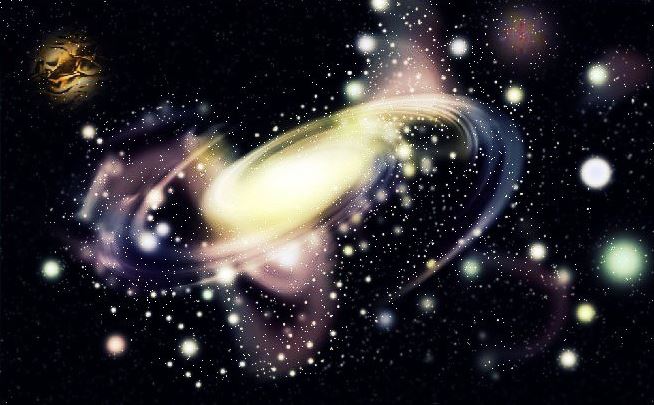‘Twinkle twinkle little star’ could prove itself more science lesson than nursery rhyme thanks to a new discovery. For the first time, diamonds far smaller than grains of sand have been observed shimmering around stars.
But this discovery is more a case of A Touch of Frost than Frost of London, as it’s allowed a team of astronomers to become intergalactic detectives and solve a 20-year mystery.
Mystery microwaves

Just short of 400,000 years after the Big Bang (a mere blink of an eye in the 13.8 billion-year history of the universe), the universe began to cool following a period of rapid expansion. As the temperature dropped, electrons began to combine with protons to form atoms. At the same time, photons began to move away through space.
When different particles in the universe are no longer in thermal equilibrium (when two objects are the same temperature and the hotter item has stopped transferring energy to the cooler one), they ‘decouple’. In this instance, a decoupling occurred between matter and radiation and the photons started to travel independently.
The result is known as the cosmic microwave background – thermal radiation that continues to travel, growing sparser as it moves across the ever-expanding universe. Essentially, the photons had filled up their petrol tank and were now off on a cosmic road trip that has yet to finish.
However, the cosmic microwave background is far from being the only occurrence of microwave light in the universe. And that brings us to the mystery at the heart of this new research.
How I wonder what you are

Over the past few decades, astronomers have queried the apparent excess of microwave light within our own galaxy, the Milky Way. The name given to this phenomenon was ‘anomalous microwave emission’ (AME), and it was often seen occurring in interstellar environments.
The mystery was what exactly caused this microwave light, and for a while it was thought the cause was polycyclic aromatic hydrocarbons – a type of organic molecule. However, Dr Jane Greaves, an astronomer from Cardiff University, decided to take a closer look at several newly formed star systems to see if they provided any clues.
Using the Green Bank Telescope (GBT) in America and the Australia Telescope Compact Array (ATCA), the team noticed that three of the 14 new stars they were monitoring clearly showed signs of AME. What these three stars had in common was the infrared light they emitted.
This light emits from the dense cloud of dust and gas, known as a protoplanetary disk, which surrounds a new star. And the light was a match with the spectral signature of hydrogenated nanodiamonds. Finally, the mystery culprit of AME appears to have been found.
Shine bright like a diamond

Diamond is the solid form of carbon and is renowned for its hardness and thermal conductivity. Because of this, the manufacturing, construction and technology industries are often as blinged-out as the average Kardashian.
Having said that, it’s unlikely the gavel will be coming down on a successful nanodiamond auction at Christie’s any time soon. These ‘diamonds’ are in fact hundreds of thousands of times smaller than a single grain of sand and are relatively commonplace. Here on Earth, they can be produced by a meteor strike.
But though they may be small, set these nanodiamonds spinning and they certainly make themselves known. And that’s exactly what causes AME – tiny diamond fragments spinning at such immense speed they emit light radiation. Just think of them as the sequin-bedazzled figure skaters of the universe.
Professor Anna Scaife from The University of Manchester’s School of Physics and Astronomy worked with Prof Greaves and co-authored the paper, published in Nature Astronomy. She described the results of the study as “exciting” and adds: “It’s not often you find yourself putting new words to famous tunes, but ‘AME in the Sky with Diamonds’ seems a thoughtful way of summarising our research.” Lucky our astronomers kept their ‘kaleidoscope eyes’ on the skies!
Words – Hayley Cox
Images –
